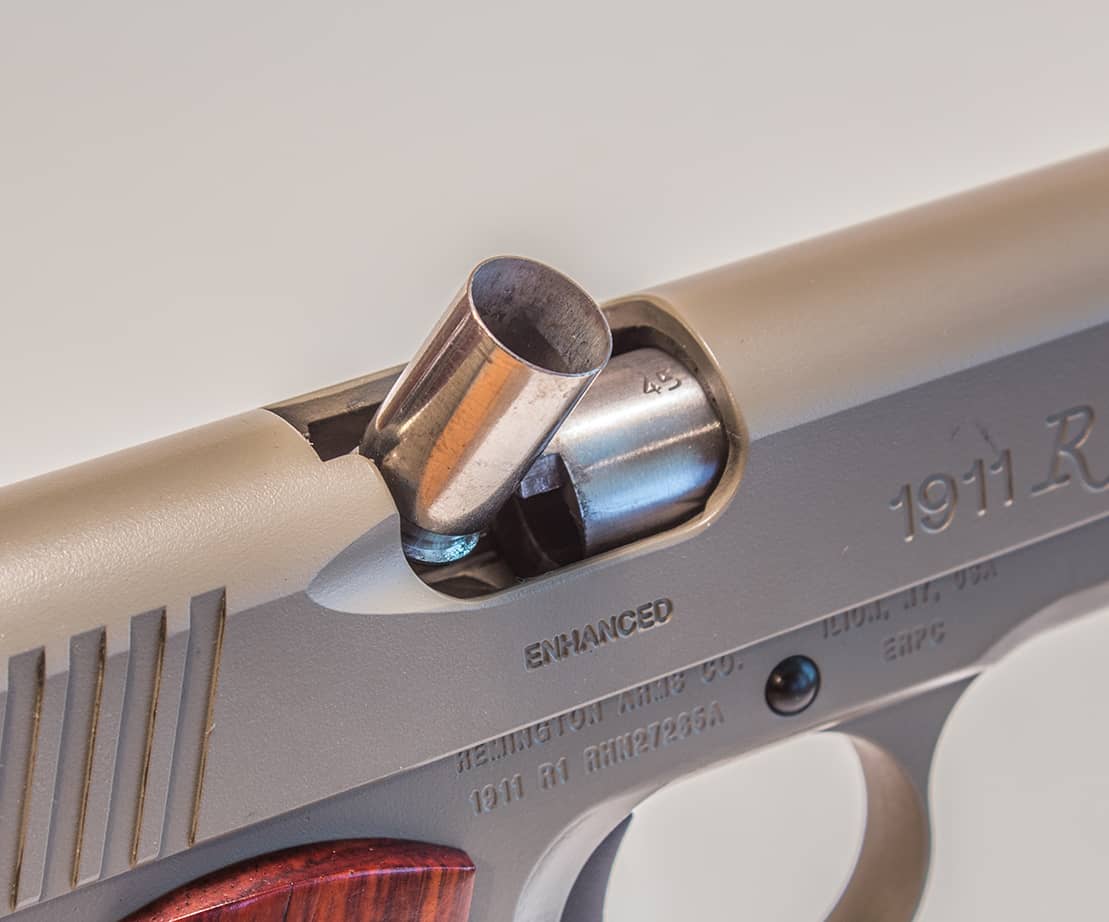Shooting with the Mann: Defensive Handgun Reliability
Richard Mann 10.17.16

How should you determine ammunition reliability in your self-defense handgun? If you fire 100 rounds without issue, is this acceptable? Or, should it be 300, 500 or even 1,000?
Gunsite Academy founder Jeff Cooper once wrote, “When a pistol is drawn and employed to save a man’s life, it absolutely must function. A reliability factor of 999 in 1,000 is not unreasonable.” If you fire 1,000 rounds out of your defensive handgun and you have a single stoppage on round No. 1,000, does that ammo pass as a trustworthy load?
Not if that was the round you really needed to work!
If those 1,000 rounds were fired without cleaning the firearm, then a stoppage might be expected. But, how many civilians trust their lives to handguns that have not been cleaned for 999 shots? Stoppages, malfunctions and jams occur because of mechanical issues, ammo issues, or human error. When evaluating the reliability of ammunition, it’s important that you trace any issue to one of these causes before you declare the ammo you’re evaluating untrustworthy.

When I review firearms, I have to shelve my tactical side and thoroughly examine any stoppages that occur. I can’t provide an accurate report if I execute immediate action every time the gun fails to work. At Gunsite Academy, the instructors sometimes chide me for being slow to clear a stoppage because I’m investigating the cause.
For example, I was recently there testing a pistol, and I’d just switched from FMJ to hollow-point ammo. I was about 400 rounds deep when I experienced a stoppage. Upon investigation, I realized my support thumb had inadvertently activated the slide stop during recoil. Had I executed immediate action, my conclusion would probably have been the pistol failed to function properly due to the ammo I was using.
I’ve said before, “Financially, we are all somewhere between a single box of ammo and a body guard when it comes to personal protection.” You might think that one failure in 1,000 rounds is the standard, but at about $1 per shot, how many of us can afford to purchase 1,000 rounds of high-quality carry ammo to make that determination?
When I’m evaluating a defensive carry load, I’ll slow fire about 50 rounds at 10 yards while making sure I do my job – the shooter’s job – right. If there are no stoppages, and if all the shots are within a 5-inch circle, I’ll continue the reliability testing and fire another 50-100 rounds executing defensive drills.

If a load passes these tests, then I’ll trust it, but only in a handgun that has a proven track record of reliability. If it is a new – untried and unproven – handgun, then I’ll run at least a couple hundred rounds of high-quality practice ammo through it in addition to the previous test. Then, and this is important, I’ll clean the handgun and shoot another 20 or so rounds of the carry ammo I’m testing. The object is NOT to see how many rounds the handgun will consume without cleaning; the object is to see if the ammo is reliable in a well-maintained handgun like I intend to carry.
Break-in periods matter with handguns, too. Very often during the first 200 rounds or so out of many new handguns, stoppages will occur. I recently tested the newly re-released Remington R51. In the first 69 rounds, I had three stoppages. But, after cleaning the handgun, I fired the next 1,084 rounds without issue.

The reality is you should never stop evaluating your ammo. About every 6 months, shoot the carry loads and rotate in fresh ones, all while being cognizant of any functioning issues. If ever a single stoppage or failure is experienced, which you feel can be traced to the ammo, discontinue its use, even if it’s just one in 1,000 rounds.

